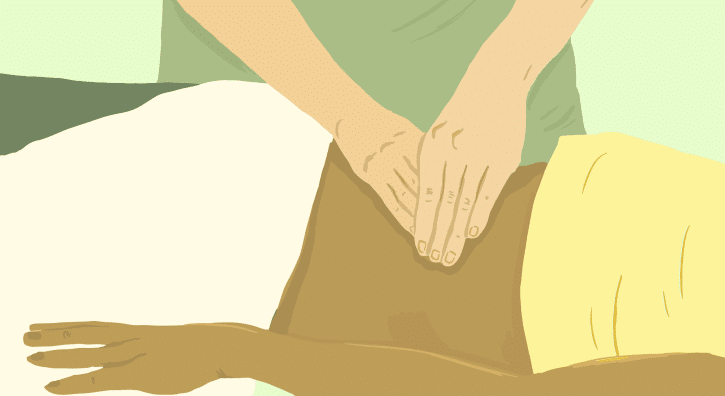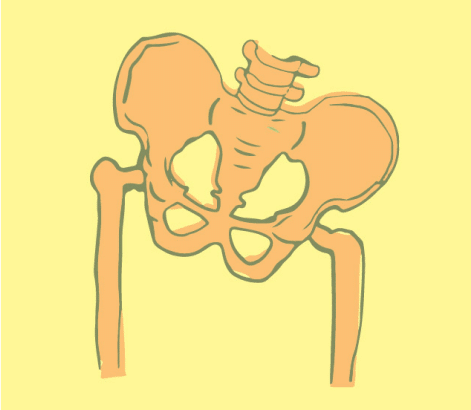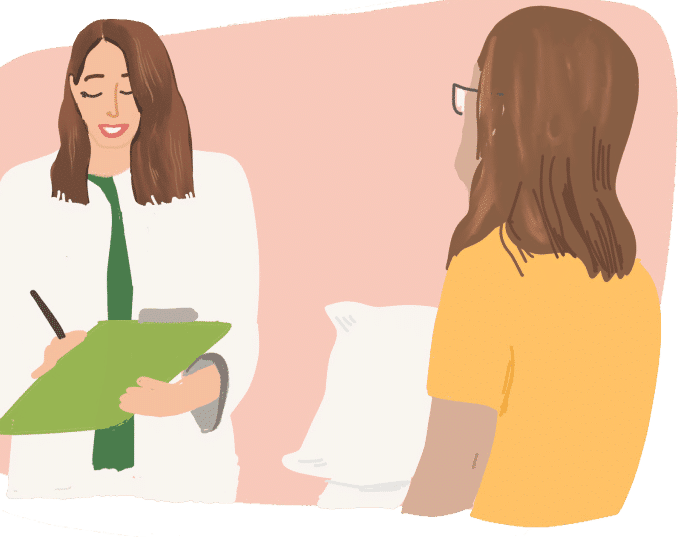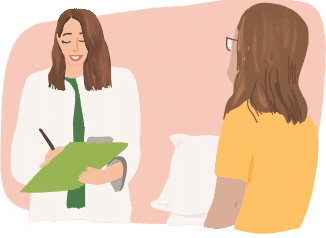

Persistent or recurring issues with sexual desire, performance, climax, or discomfort fall under the category of sexual dysfunction. The pelvic floor muscles, often overlooked, play an essential role in sexual wellness. In men, they assist in sustaining erections, and for both men and women, they are responsible for the rapid muscular contractions experienced during orgasm. These muscles typically enhance physical pleasure and are not associated with pain. When pelvic floor dysfunction is present, this dynamic shifts—pleasure may diminish and pain or abnormal sensations may arise during intimacy. This can take a significant emotional toll, but the reassuring news is that pelvic floor physical and occupational therapy has been shown to relieve symptoms and restore healthier function.
The Facts
- Approximately one-third of premenopausal women will experience pain during sex at some point in their lives.
- Erectile dysfunction is reported by 15% to 72% of men under the age of 40.
- Among males between 40 and 70 years of age, about 52% deal with mild to moderate erectile dysfunction.
- Post-prostatectomy, up to 80% of men report issues with erectile function.
- Embarrassment prevents 60% of menopausal women from telling their doctors about painful sexual experiences.
- Medications like oral contraceptives and some acne treatments can lead to vulvar discomfort and interfere with natural lubrication.
- Painful sex continues to affect 65% of postpartum women as long as 18 months after giving birth.
Persistent or recurring issues with sexual desire, performance, climax, or discomfort fall under the category of sexual dysfunction. The pelvic floor muscles, often overlooked, play an essential role in sexual wellness. In men, they assist in sustaining erections, and for both men and women, they are responsible for the rapid muscular contractions experienced during orgasm. These muscles typically enhance physical pleasure and are not associated with pain. When pelvic floor dysfunction is present, this dynamic shifts—pleasure may diminish and pain or abnormal sensations may arise during intimacy. This can take a significant emotional toll, but the reassuring news is that pelvic floor physical and occupational therapy has been shown to relieve symptoms and restore healthier function.
The Facts
- Approximately one-third of premenopausal women will experience pain during sex at some point in their lives.
- Erectile dysfunction is reported by 15% to 72% of men under the age of 40.
- Among males between 40 and 70 years of age, about 52% deal with mild to moderate erectile dysfunction.
- Post-prostatectomy, up to 80% of men report issues with erectile function.
- Embarrassment prevents 60% of menopausal women from telling their doctors about painful sexual experiences.
- Medications like oral contraceptives and some acne treatments can lead to vulvar discomfort and interfere with natural lubrication.
- Painful sex continues to affect 65% of postpartum women as long as 18 months after giving birth.
Symptoms
*Sexual Dysfunction in people with a penis
- Signs of erectile dysfunction include poor erection quality, trouble getting an erection, challenges with maintaining it, or ejaculation that occurs too early.
- Some individuals report reduced or absent ejaculatory force.
- Incontinence during orgasm, medically referred to as climacturia, can be another symptom.
- Pain after ejaculation may occur in several areas: the penis (either at the tip or along the shaft), the scrotum, or the perineum.
- Discoloration involving the scrotum, penis, or perineal skin may also be present.
Postpartum Sexual Dysfunction
- Lubrication problems during nursing due to hormonal shifts
- Pain in the perineal area resulting from episiotomy or tearing
- Reduced orgasmic function or absence of climax
- Leakage of urine during sex or orgasm
- Persistent pain when engaging in sexual activity
*Sexual Dysfunction in people with vulvas/vaginas
- Reduced vaginal moisture or inability to produce lubrication
- Pain experienced with initial penetration, deeper penetration, or throughout the act
- Clitoral sensitivity that causes discomfort or pain when touched
- Burning sensations or pain post-sexual activity
- Inability to reach orgasm or weakened orgasmic sensations
- Unintentional urination during intimacy
- Involuntary urination that occurs with orgasm (climacturia)
Menopausal Sexual Dysfunction and Post-gynecologic cancer treatment
- Dryness or difficulty lubricating the vaginal area
- Struggles with or inability to tolerate vaginal penetration
- Sex-related pain occurring during or after intercourse
- Orgasmic response that is reduced or no longer present
Symptoms
*Sexual Dysfunction in people with a penis
- Signs of erectile dysfunction include poor erection quality, trouble getting an erection, challenges with maintaining it, or ejaculation that occurs too early.
- Some individuals report reduced or absent ejaculatory force.
- Incontinence during orgasm, medically referred to as climacturia, can be another symptom.
- Pain after ejaculation may occur in several areas: the penis (either at the tip or along the shaft), the scrotum, or the perineum.
- Discoloration involving the scrotum, penis, or perineal skin may also be present.
*Sexual Dysfunction in people with vulvas/vaginas
- Reduced vaginal moisture or inability to produce lubrication
- Pain experienced with initial penetration, deeper penetration, or throughout the act
- Clitoral sensitivity that causes discomfort or pain when touched
- Burning sensations or pain post-sexual activity
- Inability to reach orgasm or weakened orgasmic sensations
- Unintentional urination during intimacy
- Involuntary urination that occurs with orgasm (climacturia)
Postpartum Sexual Dysfunction
- Lubrication problems during nursing due to hormonal shifts
- Pain in the perineal area resulting from episiotomy or tearing
- Reduced orgasmic function or absence of climax
- Leakage of urine during sex or orgasm
- Persistent pain when engaging in sexual activity
Menopausal Sexual Dysfunction and Post-gynecologic cancer treatment
- Dryness or difficulty lubricating the vaginal area
- Struggles with or inability to tolerate vaginal penetration
- Sex-related pain occurring during or after intercourse
- Orgasmic response that is reduced or no longer present
Associated Diagnoses
Diagnoses such as Endometriosis, Vulvodynia, Interstitial Cystitis/Painful Bladder Syndrome, Pudendal Neuralgia, Chronic Pelvic Pain Syndrome/Male Pelvic Pain, Lichen Sclerosus, Lichen Planus, Pelvic Floor Dysfunction, post-prostatectomy complications, and Genitourinary Syndrome of Menopause are all associated with sexual dysfunction and pelvic pain.

Associated Diagnoses
Diagnoses such as Endometriosis, Vulvodynia, Interstitial Cystitis/Painful Bladder Syndrome, Pudendal Neuralgia, Chronic Pelvic Pain Syndrome/Male Pelvic Pain, Lichen Sclerosus, Lichen Planus, Pelvic Floor Dysfunction, post-prostatectomy complications, and Genitourinary Syndrome of Menopause are all associated with sexual dysfunction and pelvic pain.


Causes of Sexual Dysfunction
- Pelvic pain syndromes associated with pelvic floor dysfunction (above)
- Childbirth
- Medications
- Obesity
- Cardiovascular disease
- Menopause
- Jelqing
- Genital mutilation, genital cutting
- Surgically-induced
- Pelvic Floor Reconstruction
- Prostatectomy
- Gender affirming surgery
- Episiotomy
- Vestibulectomy
- Pudendal Nerve Decompression
- Mesh excision
Causes of Sexual Dysfunction
- Pelvic pain syndromes associated with pelvic floor dysfunction (above)
- Childbirth
- Medications
- Obesity
- Cardiovascular disease
- Menopause
- Jelqing
- Genital mutilation, genital cutting
- Surgically-induced
- Pelvic Floor Reconstruction
- Prostatectomy
- Gender affirming surgery
- Episiotomy
- Vestibulectomy
- Pudendal Nerve Decompression
- Mesh excision

Diagnostic Challenges
A growing body of evidence shows that many doctors are not at ease discussing sexual health with their patients, and likewise, many patients avoid bringing up these concerns due to embarrassment or fear of judgment. This discomfort is especially troubling for LGBTQ+ individuals, who often face bias in clinical settings, resulting in overlooked or neglected sexual health needs. As a healthcare community, we have an obligation to do better. At PHRC, our mission is to provide a supportive, inclusive space for all patients navigating pelvic health concerns. What many don’t know is that sexual health is now considered a specialized area within medicine, and effective help is out there. True sexual well-being is a combination of physical function and mental well-being, which is why optimal care often includes a team-based approach that blends medical treatment, psychological support, and pelvic floor therapy.
Diagnostic Challenges
A growing body of evidence shows that many doctors are not at ease discussing sexual health with their patients, and likewise, many patients avoid bringing up these concerns due to embarrassment or fear of judgment. This discomfort is especially troubling for LGBTQ+ individuals, who often face bias in clinical settings, resulting in overlooked or neglected sexual health needs. As a healthcare community, we have an obligation to do better. At PHRC, our mission is to provide a supportive, inclusive space for all patients navigating pelvic health concerns. What many don’t know is that sexual health is now considered a specialized area within medicine, and effective help is out there. True sexual well-being is a combination of physical function and mental well-being, which is why optimal care often includes a team-based approach that blends medical treatment, psychological support, and pelvic floor therapy.
Treatment:
How We Can Help You

If you’re in Burbank and dealing with sexual dysfunction, we recommend scheduling an evaluation with a pelvic floor physical and occupational therapist to explore whether your pelvic floor muscles could be influencing your symptoms. Your first appointment includes an in-depth discussion of your medical background, any previous diagnoses, the treatments you’ve attempted, and what has or hasn’t worked. We know many individuals from Burbank come to us feeling frustrated and unheard, and we make it our priority to provide the support and insight they’ve been missing. The physical exam includes a careful look at your muscles, joints, nerves, tissues, and overall movement patterns. Once complete, your physical and occupational therapist will walk you through the results and explain what may be contributing to your symptoms. You’ll receive a personalized treatment plan with specific goals for both the short and long term. Typically, treatment consists of one to two sessions per week for around 12 weeks, accompanied by a custom home exercise routine. Your therapist will also collaborate with any other providers involved in your care. Our mission is to guide you toward recovery and empower you to live with ease and confidence in Burbank and wherever life takes you.

Treatment:
How We Can Help You
If you’re in Burbank and dealing with sexual dysfunction, we recommend scheduling an evaluation with a pelvic floor physical and occupational therapist to explore whether your pelvic floor muscles could be influencing your symptoms. Your first appointment includes an in-depth discussion of your medical background, any previous diagnoses, the treatments you’ve attempted, and what has or hasn’t worked. We know many individuals from Burbank come to us feeling frustrated and unheard, and we make it our priority to provide the support and insight they’ve been missing. The physical exam includes a careful look at your muscles, joints, nerves, tissues, and overall movement patterns. Once complete, your physical and occupational therapist will walk you through the results and explain what may be contributing to your symptoms. You’ll receive a personalized treatment plan with specific goals for both the short and long term. Typically, treatment consists of one to two sessions per week for around 12 weeks, accompanied by a custom home exercise routine. Your therapist will also collaborate with any other providers involved in your care. Our mission is to guide you toward recovery and empower you to live with ease and confidence in Burbank and wherever life takes you.
How Can We Help You?
Please use the form below to send us any questions or comments. You must include your e-mail address in order for us to send a response. Please be assured that all of your information will be kept confidential.

Join The Newsletter. Win a copy of our book, “Pelvic Pain Explained!”
We love getting to know our website visitors. Please tell us a little bit about yourself and get the latest info via PHRC e-newsletter!
*Subscribers automatically eligible to win our book, “Pelvic Pain Explained.”
Pelvic Pain Explained is ultimately a narrative about how individuals come to experience pelvic pain, the obstacles both patients and clinicians must overcome in finding a diagnosis and appropriate care, the confusion that surrounds exploring various treatment approaches, and the deep personal and relational toll of living with a condition that often goes unseen—all of which is explored in depth throughout the work.


